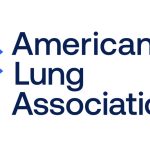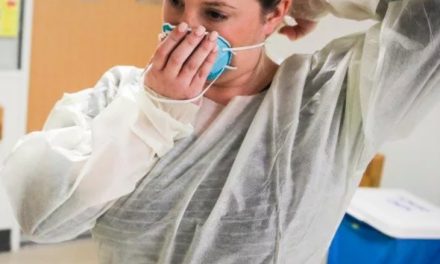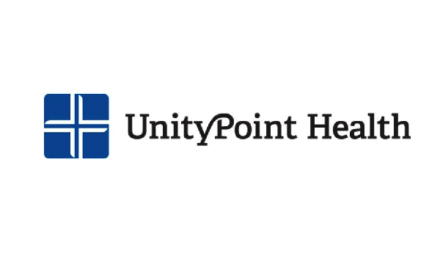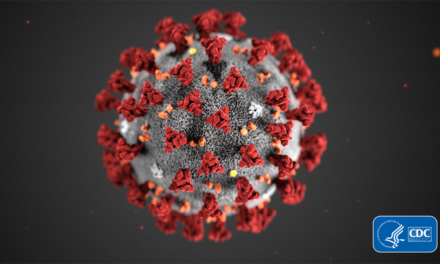
Eagleson reflects on tenure as HFS director
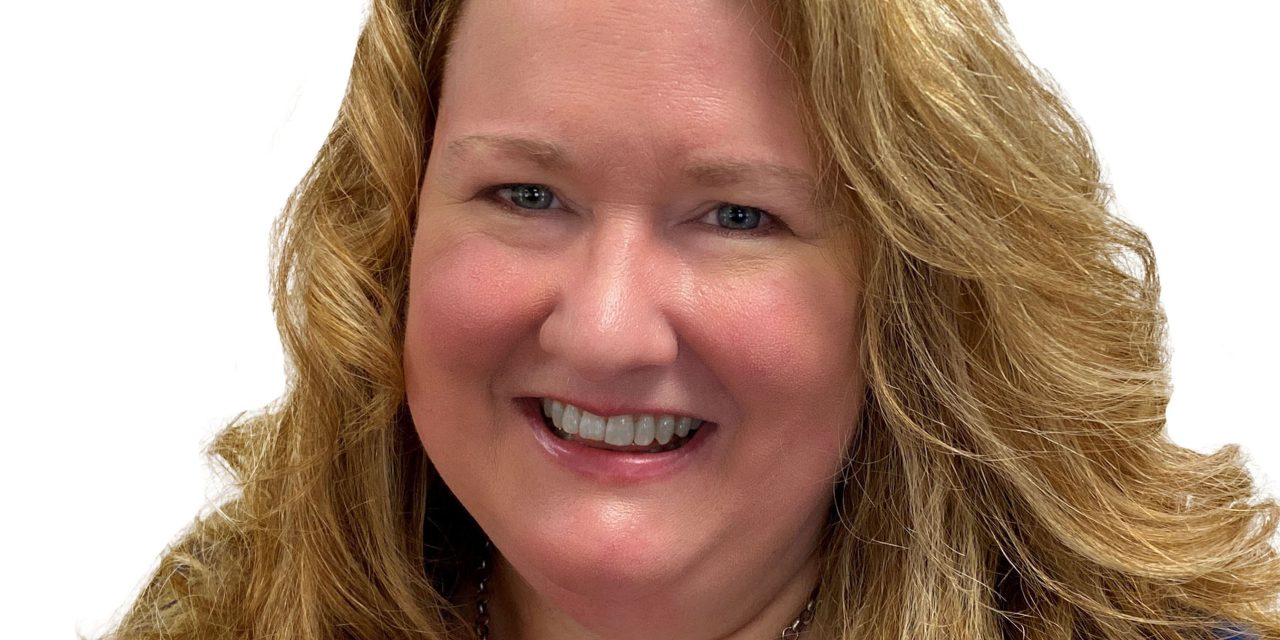
Department of Healthcare and Family Services Director Theresa Eagleson said it is a “bittersweet” feeling to be leaving the agency at the end of the year.
But with that comes immense pride in the work she and the team have achieved in recent years, from funding healthcare transformation collaboratives to implementing a long-sought policy to change how nursing homes are funded.
“This is a really incredible team that cares deeply about making Medicaid better for the millions of people that we serve,” she recently told Health News Illinois. “I think the future is bright here, but it’s tough to leave the team that you’ve built over a number of years.”
Eagleson’s current tenure is merely one step in a three-decade career in the Medicaid field. She was Illinois’ longest-serving Medicaid director, overseeing the program from 2007 to 2014, and has served in various policy and administrative positions in state government.
“I started as a Medicaid analyst in 1993 … When I started under then-Gov. (Jim) Edgar, we had over a 100-day payment cycle and everything was on paper,” she said. “I remember coming over here (and) taking a claims processing tour on the first floor, and there were bills stacked everywhere, like in the hallways.”
Eagleson spoke about other achievements during her time as director, future plans and what she sees as the next challenges in the Medicaid field.
Edited excerpts below:
HNI: What are the highlights of your tenure as director?
TE: Over the past five years in the Pritzker administration, we’ve been able to implement a lot of nation-leading initiatives aimed at reducing disparities and creating a more equitable healthcare system and child support system. We’ve really prioritized expanding behavioral healthcare and reproductive health services.
We’ve implemented a new vision at HFS of centering around our customers and centering equity for those customers. We say we improve lives. We try to center that every day as we go about our work on both the medical side of the house and the child support side of the house. I can’t say enough about the phenomenal team.
We tried to make our managed care organizations more partners and more accountable. The provider assessment that we did with the managed care organizations back in the first year … made the Medicaid program less dependent on state funds and put a number of rate increases and program expansions in place for providers, so that was fantastic.
Nursing home rate reform, we’re super proud of that, as well as being the first state in the country to implement 12-month postpartum coverage for women, expanding that from 60 days. Healthcare transformation collaboratives were some of the first things that I tried to put in motion, even though they didn’t pass until the COVID spring session.
Signing those first COVID home response contracts was a big deal. I think I was actually in bed with COVID-19 when I signed the first one. And children’s behavioral health reforms, the (Program of All-inclusive Care for the Elderly) — hopefully the first sites are going to get off the ground this summer. So a lot of real progress for people that we’re all very proud of.
HNI: You oversaw the continued shift to Medicaid managed care. How is it going? What is the relationship between the agency, providers and MCOs?
TE: My perspective is pretty long on this stuff. I remember when all the claims were paper and we paid all the claims at HFS. There were a lot of disputes back then. But the thing I think that was missing when this administration came in the door was the ability to discuss problems and really get to a resolution.
So really quickly, we started those intense meetings back when Doug Elwell was the Medicaid director. Every Monday morning, we made the MCOs, the providers and us sit together right and work through problems. It’s never one-sided … Sometimes the department couldn’t take in the claim appropriately. Sometimes the health plan had an edit that was not working as it should. Sometimes the provider was missing something on the bill. So it’s working through those things.
I think, and our data shows us, that it is going much better. Our denial rates in managed care were below 9 percent the last time I looked at a dashboard, which is pretty standard in the industry. But that doesn’t mean we shouldn’t stay on top of watching it and probably have to have some of those conversations, though not as intensely. But I think we’ve made huge strides.
HNI: How have the healthcare transformation collaboratives gone? Are they doing what you hoped they would accomplish?
TE: I remember when we conceived of this notion and found some money in the hospital assessment that we carved out to use for this. I talked to the governor about it and was like, ‘A lot of these providers when they’re 70 and 80 percent Medicaid, it’s not like they get capital funding or ability to think strategically or innovatively. So this is what we want to create: a space for providers in some of these more distressed communities.’
And I think it worked. There are 15 of them, and they’re in all different stages, but there are some like the (West Side Community-based Integrated Care Collaborative) that are seeing some great results. (Recently,) we went down to attend the ribbon cutting for a new urgent care center in East St. Louis. The hospital in that community closed almost a decade ago and there had been very little access, certainly not after-hours access. The community celebration at that event was really awesome. All kinds of people came up saying how much this means to them. I’m excited to see what that program continues to bring.
HNI: We’re about a year-and-a-half since the nursing home rate reform plan became law. What was it like to finally get that proposal past the finish line?
TE: For us, this started before COVID. We had been talking about how to get nursing homes more focused on quality and staffing. We even started meeting with the stakeholders around January 2020. And if you look at our website, we have all the agendas from those meetings there. So even before it came to the legislative realm, we had been working on it.
Staffing is the number one indicator of quality in a nursing home setting. That’s where all the research points. (We were) investing hundreds of millions of dollars in different years before 2020, and we were still at the bottom in Illinois, just dead last on staffing. We were trying to figure out how in the world we move that needle. It ended up coming down to the three-pronged approach that we took: raising (certified nursing assistant) wages to keep people in their jobs, tying the increased payment directly to increased staffing ratios according to the STRIVE scale and quality payments.
It was a hard negotiation, it was a lot of negotiation. Change is really hard. Even when people know and want a different outcome, it’s still hard to change. But we just kept at it.
HNI: How has the implementation gone?
TE: I am so incredibly proud. We’ve been asked by a number of other states, as well as our federal partners, to help them understand how we did this. I can’t even count how many meetings we had with the trade associations, SEIU and legislators trying to get that passed. But it was so exciting when we did and now, I think we have five quarters under our belt.
Last quarter, when I looked at the data, we were the only state in the country to be back to pre-COVID levels of staffing. For our trajectory of increased staffing, every quarter we’ve gone up dramatically. So I’m not sure how far off the bottom we are right now. There’s probably still a lot of work to do, but all the data is going in the right direction. Another interesting piece of that data is that the homes that were below the STRIVE standards are making the most improvement. I think that the incentives are really working.
HNI: Health equity is a recurring theme in the department’s initiatives. Why is that so important?
TE: It’s tough to find exactly what you need. You have to advocate oftentimes for what you or your family member needs. My mind always goes back to, ‘I have a fair amount of resources, both financially as well as I know a lot of people in this space and in this system.’ So what do people do when they’re working 12 hours a day, a minimum wage job? They can’t take time off. They don’t know what questions to ask at the physician’s office. So I always go back to that: How do we make it more accessible for people? And that means all people, but especially the Medicaid population, the customers that we’re here to serve.
That’s why the equity lens. It’s easy for me to go get into my car and drive where I need to go. That’s not necessarily the case, depending on where you live in this state. In a more rural community, it might take you two hours to get to the type of healthcare you need. In the inner city, you might not have a car, or there might not be a grocery store around the block to go get the special formula that your infant needs. It’s just trying to figure out how to do a better job, meeting people’s needs and meeting them where they are. It goes back to the phrase we used when we were doing nursing home rate reform: It’s a moral imperative. Society is measured by how it meets the needs of all its members.
HNI: This year has seen the return of Medicaid redeterminations for the millions of members in the program. How has the process gone so far? How does it compare to what the department anticipated coming into it?
TE: We, for almost a year in advance, were doing that get-ready-to-renew campaign, trying to get people to update addresses and do everything we could to get the word out. We knew this was going to be anything but easy.
I think we can always do better, but we’re super proud of where we are right now. If you look at the (KFF) studies online, we had one of the highest percentages of renewal, around 90 percent. We want to keep everybody eligible in the program.
We’ve done a lot of things, like a 30-day grace period, to minimize procedural disenrollments. When the federal government came out and started talking about looking at cases at the individual level, rather than the full-family case, household level, we moved quickly to look at ex parte redeterminations at that individual level, which I think made a difference for some kids.
We’re going to keep it up. We’re going to keep up the ads and keep up the partnerships with all these community-based organizations and try to make sure that we can reach everybody.
HNI: What do you think are going to be some of the major changes or challenges going forward in the Medicaid field?
TE: You’ll see the department — I’ll make a prediction — continue down this space of centering customers. I hope that you’ll see even more interagency collaboration to try to meet customers where they are.
And then the boring answer, but it’s a huge challenge here, is we have a lot of system upgrades that we need to do in government. If we don’t have the backbone like the claims payment system … if we can’t continue to modernize (the Integrated Eligibility System) for the front-end customer experience, then it’s difficult to do the things that we all want to do.
So it’s not a very sexy answer, but that’s a huge challenge, getting those systems upgraded and implemented correctly. And the bureaucracy is big and lumbering. So that’s a challenge, but it’s not insurmountable.
HNI: What’s next for you?
TE: I’m super excited about what the future holds. I’ve got a couple of things I’ve been working on. I’m going to take a little bit of a break and make an announcement later.




